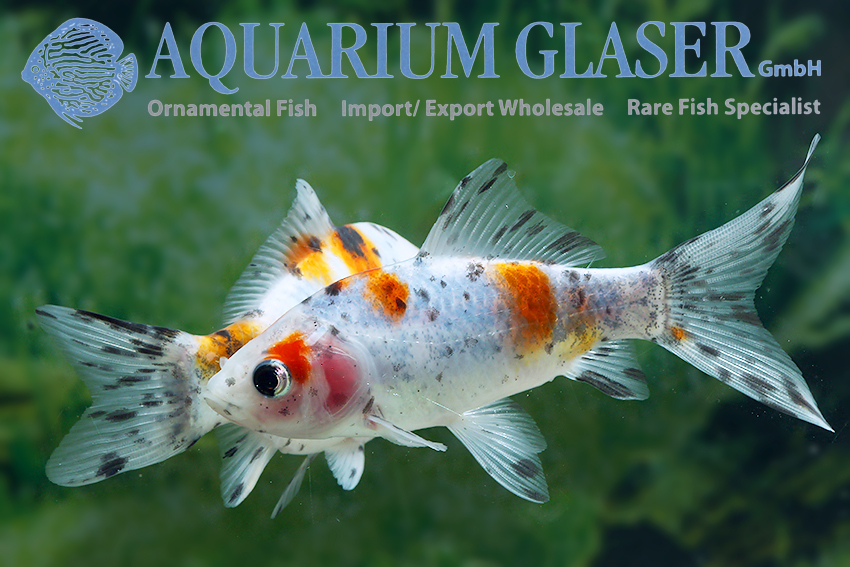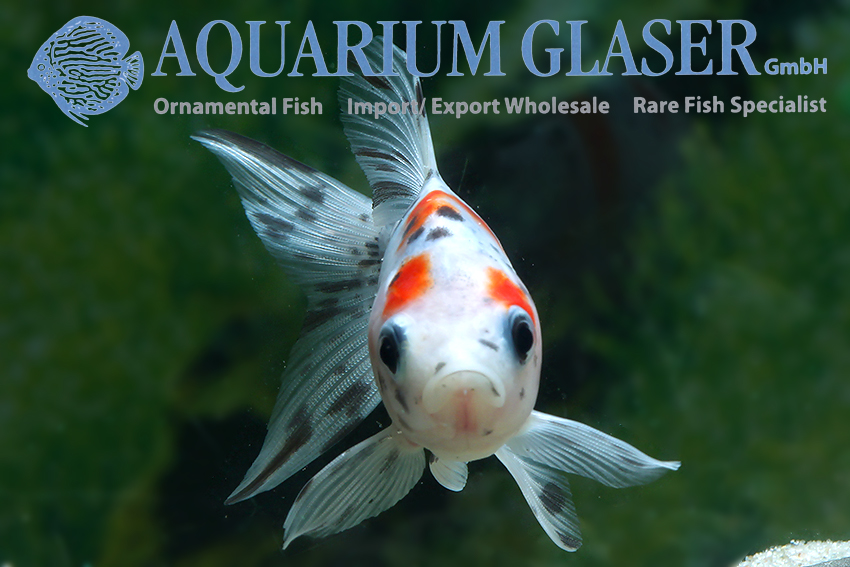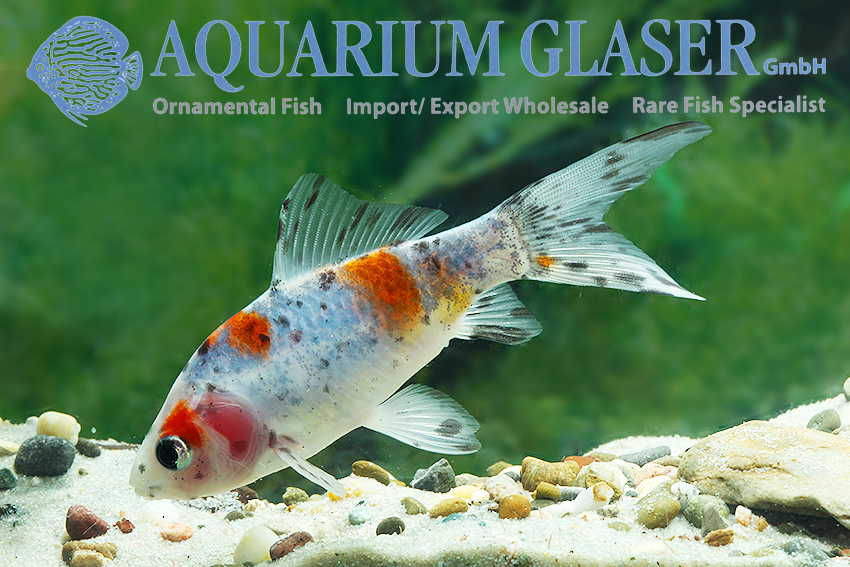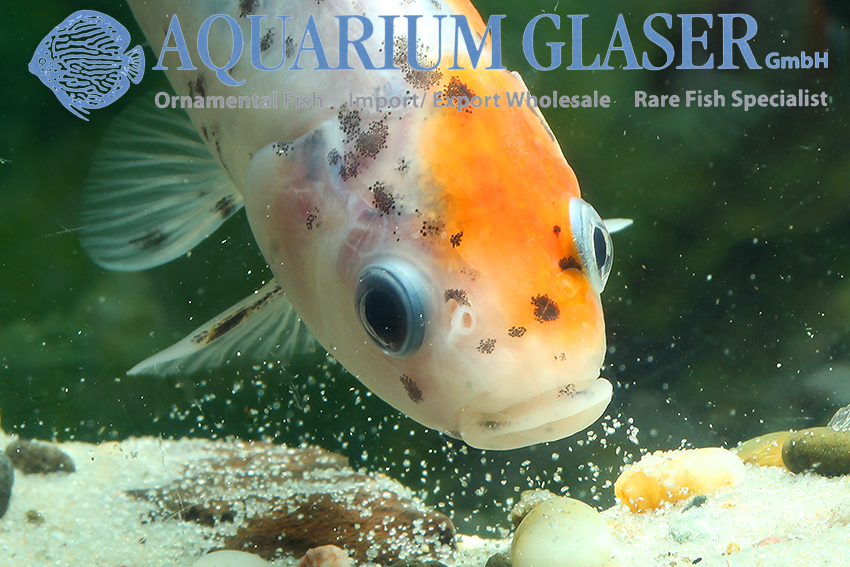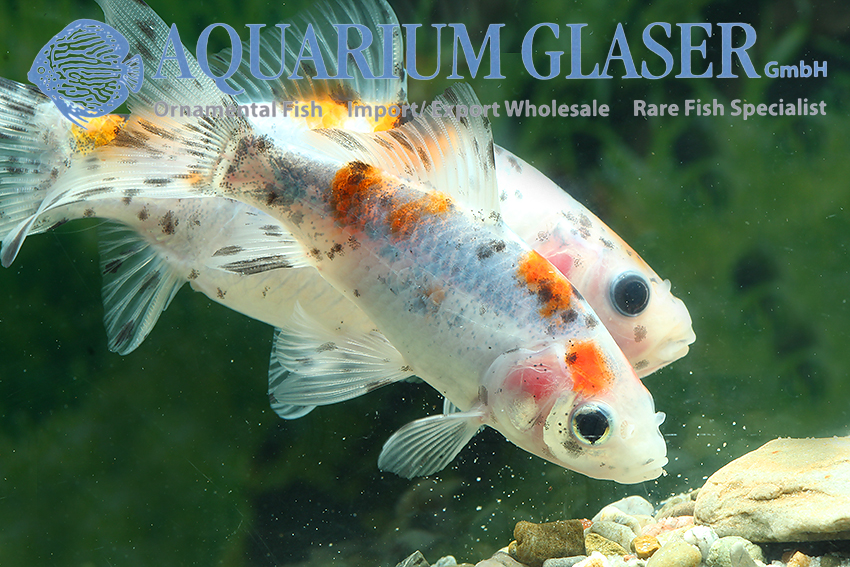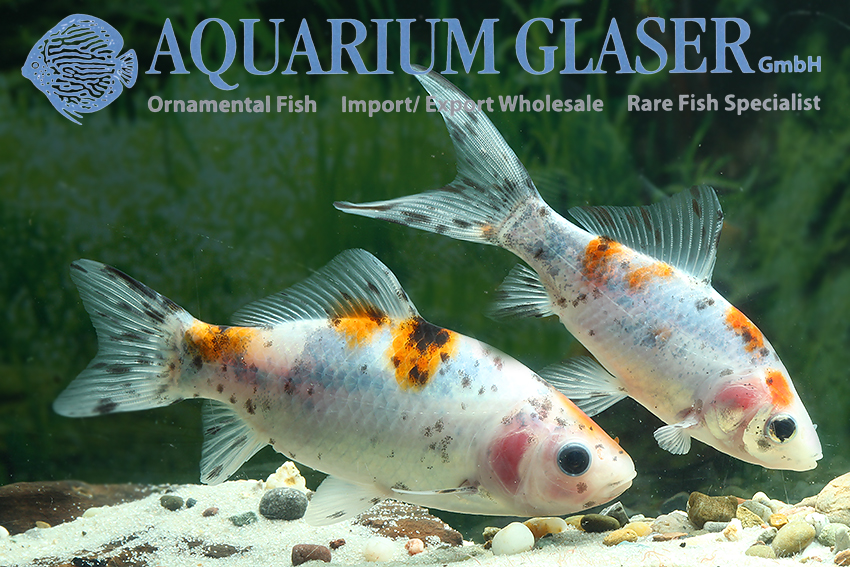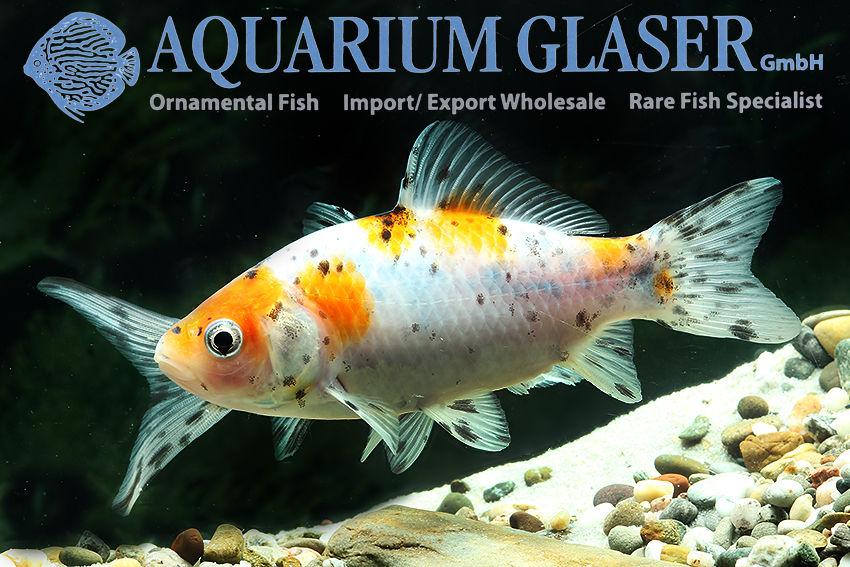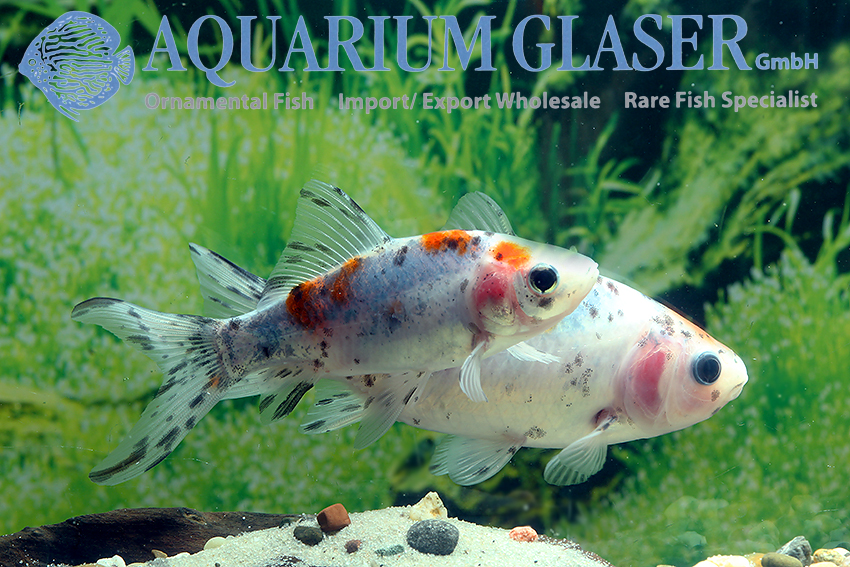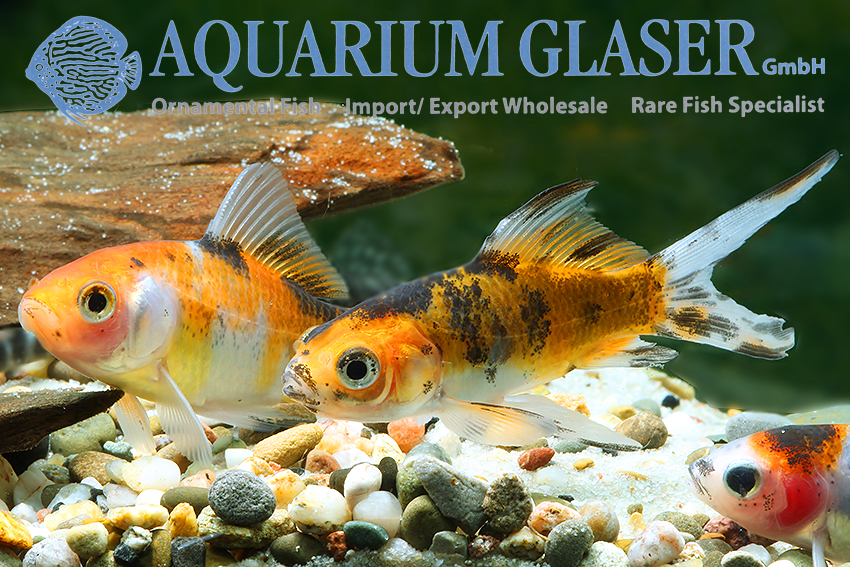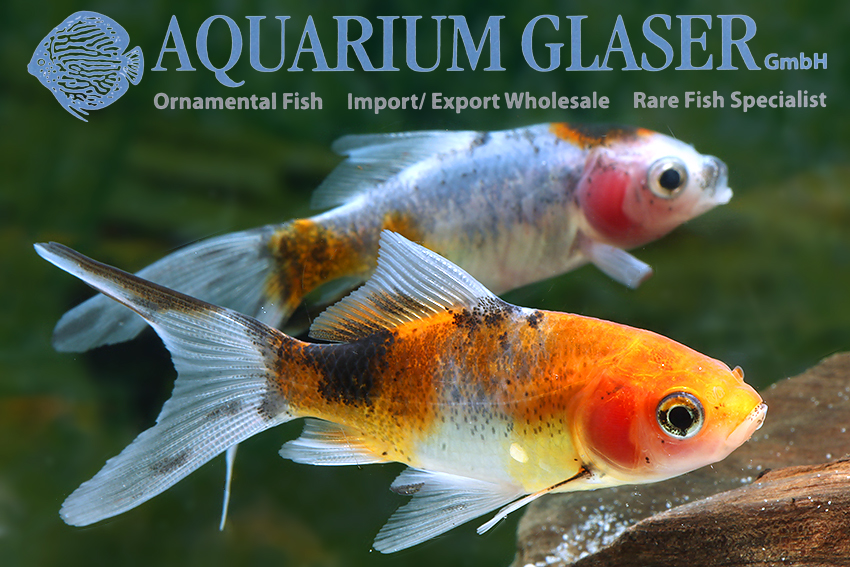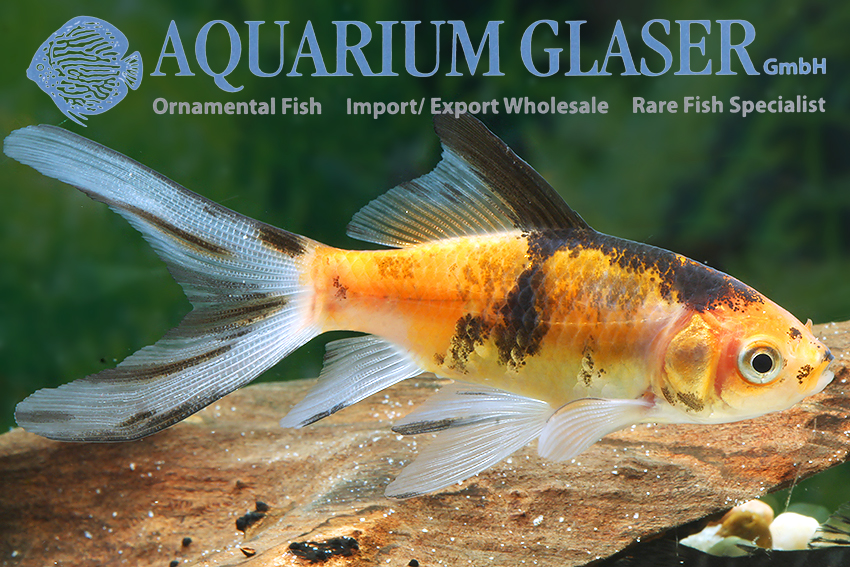It is and remains the oldest ornamental fish in the world: the goldfish (Carassius auratus) and its many cultivated forms. It has been propagated and kept by humans for about 1,000 years.
Many consider goldfish to be garden pond fish, especially the varieties with “nomal”, wild fish-like body types. This is quite true, and they do grow into huge (over 20 cm, sometimes up to 30 cm long), magnificent specimens in the pond. But there is a reason why the goldfish has been in culture for so long: the wild form is also one of the most adaptable fish in nature. The temperature range can be between 0 (!) and over 30°C, the fish can also tolerate temporary oxygen deficiency due to special physiological adaptation mechanisms and if in nature the water is only small and the food supply is low, it only grows to 5-8 cm in length and also reproduces at this size. That is why all goldfish forms can be excellently kept in the aquarium. However, our western understanding of animal husbandry is not so much to push the genetic limits of what is possible; we prefer to keep animals as “optimally” as possible, i.e. under the conditions that are subjectively most comfortable for the animals.
The Shubunkin belongs to the large-growing goldfishes and therefore should be kept in large aquariums (from 150 cm). It is a five-colored breeding form, in which blue, red, orange, white and black colors can be found in highly variable proportions. Five-colored goldfish are also called calico goldfish in Japan (calico is actually a special cotton fabric, which was colorfully printed in Japan). Usually shubunkin are sorted by the primary colors of blue and red, but this need not be the case. Pure goldfish breeding forms, where one animal looks like the other, do not exist, because the genes for fin length and body colors are located on several alleles. Many prefer the shubunkin as a comet (i.e. with elongated fins), but in the same brood normal-finned siblings can also occur. Because of the complex inheritance relationships, each Shubunkin is unique.
The Shubunkin is a relatively young breeding form, which was “only” created in 1892 by the Japanese breeder Yoshigoro Akiyama I by crossing calico dragon eyes (“Telskop-Eyes„), common goldfish and wakin with a single tail fin. Shubunkin were first introduced to the public in 1902. The name “Shubunkin” was coined by Shinosuke Matsubara, whom the bright colors reminded of a kimono.
For our customers: we have shubunkin in several sizes on sale all year round. They have depending on size, code 811000-811007 on our stock list. Please note that we supply only wholesale.
Text & photos: Frank Schäfer





